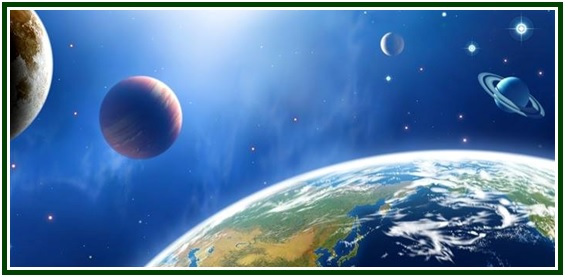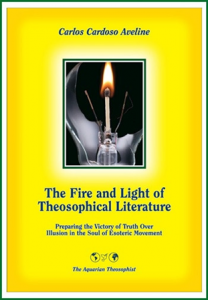
There Is No Void in Nature,
And Space is Filled With Souls
John Garrigues

For all we know, that which we call space may be the Knower in this body of ours.
Probably it is, because the only thing that does not move is Space; the only thing that does not change is Space; and there is something in us that does not move at all, that does not change at all.
Our bodies move, our minds move; our bodies change, our minds change, our desires, and aspirations, and volitions, and feelings change, but “I” who experience these things am the same “I” who was in a child’s body, in a baby’s body; and so with every man.
Space, then, that is within periphery of this frame is not separate from the Space that is within the periphery of any other frame; nor is Space disturbed by our bodies being here – our bodies growing large and growing small, growing old, or growing young, coming or going. And in the last analysis, where did these bodies of ours come from? From Space. Where do they exist now? In Space. Where will they go after they dissolve? Into Space.
That in us which lives and thinks is a part of the immemorial, indivisible, all-pervasive Spirit. The sun, as a symbol, might be taken to represent Spirit; and the moon, as a symbol, taken to represent dead matter. They are both in Space – plenty of room for both of them, and yet a colossal difference between the sun and sunlight, and the moon and moonlight. But if the Sun were dissolved, it could only be dissolved into Space. When the sun came forth, it came forth out of Space; and while it exists, it exists in Space for, however long-lived the Sun may be, it had a beginning; however long its life may be, it will have an ending. Where will its end be? In Space. Whatever the action of any planet, or of any mote, or of any man, where is it? In Space.
To conceive of Space as the symbol of the omnipresent Deity – it can be pictured in no other way – and to think of ourselves (our ego, our consciousness) as an indivisible portion of Space, is to get some kind of an image before the mind of the immortal, of the oneness of all Life. It is to recognize that we falsely attach reality to all the things and objects in Space, instead of attaching reality to the Space from which they all came, in which they all must return. So, instead of attaching the reality of the sense of our identity to Space, we falsely attach reality to personal forms. We have to throw away that false conception.
When we look out at the objects in Space, and see how the ample bosom of Space has room to nurse a million million progeny – all the children that wander lonesomely through her vast fields – any man, no matter how “average” his mind may be, can quickly realize that Space is not a void: Space is filled with souls. We know here of existence only as a combination – a muddy compound of Spirit and Soul and mind and body, and the latter two obscure the light of the higher two in just the same way as the terrene emanations may obscure the noonday sun. How could a man able to wander at will through the infinitudes of Space, finding companionship and the communion of souls wherever he might go – how could such a man speak to us in any other terms than illimitable imagery, parables, and pictures, of the only realities that there were, or are, or ever shall be?
Blessed are those souls who people invisible Space in incorporeal bodies, as compared with those souls who people Space in objective forms and think themselves to be no more than a body, with no more than a mind!
000
The article “The Sacred Dimension of Space” was first published in the July 1925 edition of “Theosophy” magazine, in Los Angeles (pp. 399-400). Original title: “Space”. It had no indication as to the name of the author. On the criteria used to identify articles written by J. G., see the text “Life and Writings of John Garrigues”, by Carlos Cardoso Aveline. It is published at our associated websites.
000
On the role of the esoteric movement in the ethical awakening of mankind during the 21st century, see the book “The Fire and Light of Theosophical Literature”, by Carlos Cardoso Aveline.

Published in 2013 by The Aquarian Theosophist, the volume has 255 pages and can be obtained through Amazon Books.
000